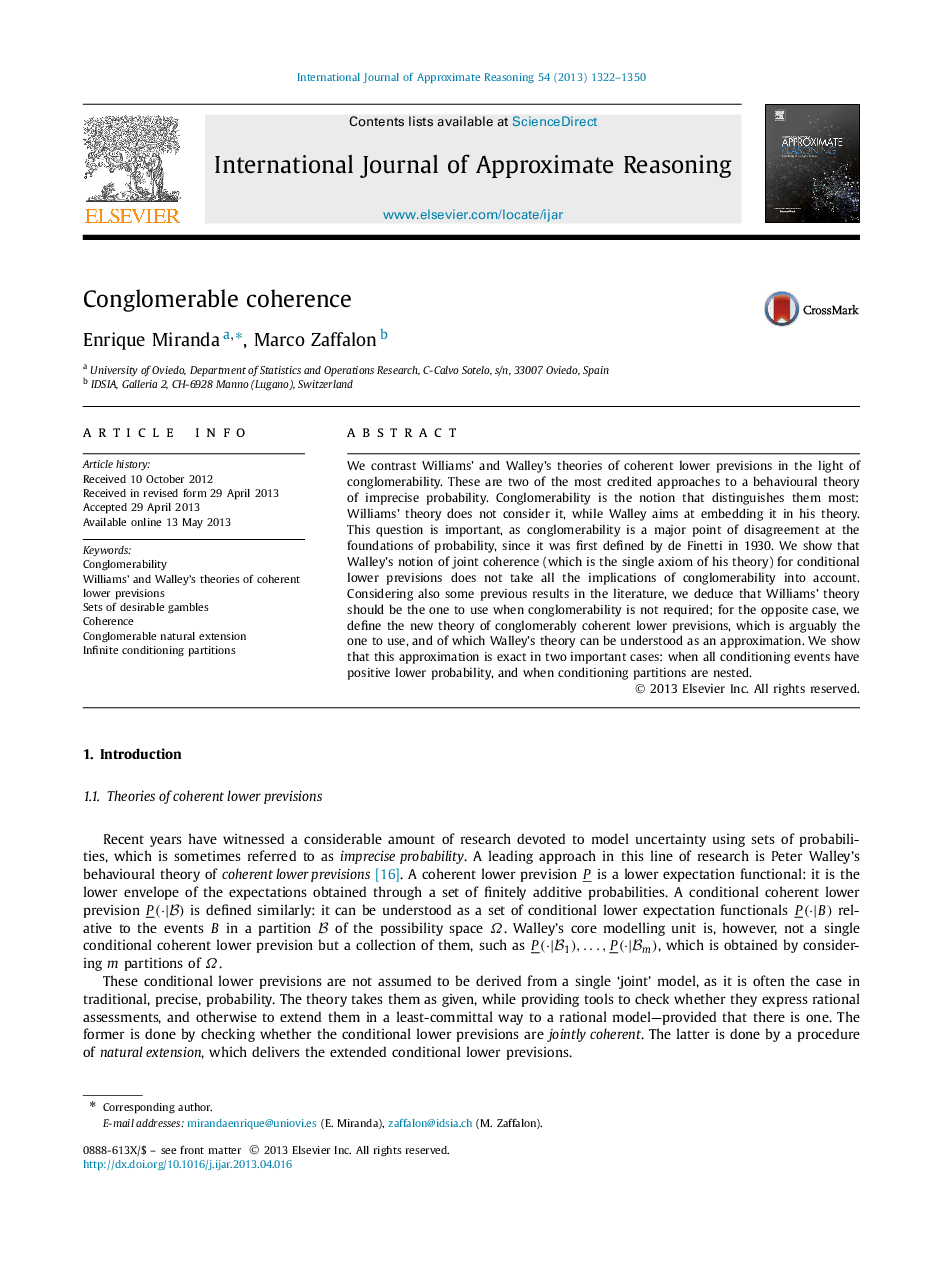| Article ID | Journal | Published Year | Pages | File Type |
|---|---|---|---|---|
| 6858972 | International Journal of Approximate Reasoning | 2013 | 29 Pages |
Abstract
We contrast Williamsʼ and Walleyʼs theories of coherent lower previsions in the light of conglomerability. These are two of the most credited approaches to a behavioural theory of imprecise probability. Conglomerability is the notion that distinguishes them most: Williamsʼ theory does not consider it, while Walley aims at embedding it in his theory. This question is important, as conglomerability is a major point of disagreement at the foundations of probability, since it was first defined by de Finetti in 1930. We show that Walleyʼs notion of joint coherence (which is the single axiom of his theory) for conditional lower previsions does not take all the implications of conglomerability into account. Considering also some previous results in the literature, we deduce that Williamsʼ theory should be the one to use when conglomerability is not required; for the opposite case, we define the new theory of conglomerably coherent lower previsions, which is arguably the one to use, and of which Walleyʼs theory can be understood as an approximation. We show that this approximation is exact in two important cases: when all conditioning events have positive lower probability, and when conditioning partitions are nested.
Related Topics
Physical Sciences and Engineering
Computer Science
Artificial Intelligence
Authors
Enrique Miranda, Marco Zaffalon,
